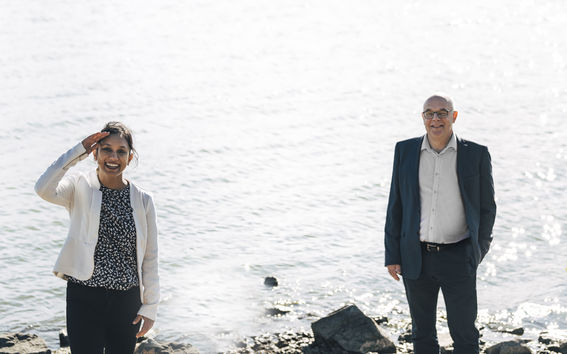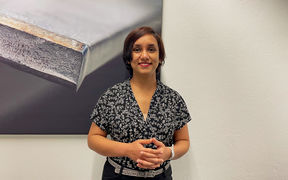Launching autonomous vessels in our waters

Vice President of Safe and Connected Society at VTT, the Technical Research Centre of Finland, Sauli Eloranta says that unmanned vessels can bring benefits to both maritime business and society at large.
‘In sparsely populated communities unmanned ferries, for instance, could make transport much more affordable,’ Eloranta says.
‘Ferries are a good example, because there are no technical obstacles to running autonomous ferries like horizontal elevators. In fact, Finnish legislation quite recently recognised that ferries could be steered with a virtual cable instead of a physical one,’ he adds.
Four degrees of autonomy
To non-experts, the term ‘autonomous ship’ sounds like a self-sailing vessel, moving from port to port without human intervention. Researchers and the maritime industry look at autonomy more like a continuum of capabilities.
‘The International Maritime Organization IMO has identified four degrees of ship automation. The first level is decision support: algorithms suggest actions, but seafarers are on board to operate and control shipboard systems and functions,’ explains Mashrura Musharraf, Assistant Professor of Marine Technology at Aalto University.
‘The second level is a remotely controlled ship, but it has seafarers on board who can take control and operate the ship when needed. The third refers to an unmanned vessel that is controlled remotely. The fourth means a fully autonomous ship, with an operating system that can make decisions and determine actions by itself,’ she continues.
Research conducted at Aalto suggests that we can expect to see first level autonomous vessels with some automated processes and decision support by 2025.
‘At present, ships are not required to use situational awareness technologies apart from for example radar and satellite positioning. Sensor fusion and other situational awareness solutions are advancing rapidly, and they are readily available and inexpensive. I would like to see them in wider use in all commercial vessels,’ Eloranta points out.
‘Yes, first level autonomous vessels are already a reality. Before we see the second and third level of autonomous ships in commercial use, we need to focus on safety challenges and tackle them carefully. As for fully autonomous ships – I doubt we will see them for quite a number of years,’ Musharraf ponders.
Successful demos
Finland is one of the leaders in autonomous vessel research and development. Already in 2017, the country opened the world’s first test area for projects related to autonomous shipping. The Jaakonmeri Test Area outside the municipality of Eurajoki is open to anyone, globally, wishing to test autonomous maritime traffic, vessels, and technologies.
Soon after this milestone, Finland saw many interesting demonstrations of what the future of autonomous shipping could look like.
In 2018, a state-owned ferry operator Finferries teamed up with Rolls-Royce to test an autonomous ferry in the Turku archipelago. The autonomous car-ferry was named Falco, and it sailed between Parainen and Nauvo. The first leg of Falco’s journey was autonomous, while its return was controlled by a remote operating centre situated 50 kilometers away. Sauli Eloranta was onboard Falco and in charge of some of the journey’s safety issues.
‘Falco detected objects using sensor fusion and artificial intelligence. We had 80 guests onboard and, regrettably, the weather was dismal, with heavy sleet and stormy conditions. Despite the less-than-optimal circumstances, everything went as planned. All in all, the ferry ride was uneventful, just like an autonomous ferry-ride should be,’ Eloranta reminisces.
That same year, ABB and Helsinki City Transport successfully completed the world’s first remote control trial of an existing passenger ferry in Helsinki, and in 2022, Finnpilot Pilotage used remote piloting technology to direct a ship from the Port of Kokkola to the fairway.
Autonomous ships are briskly moving from concept to reality. According to Eloranta and Musharraf, one of the countries neck-and-neck with Finland is Norway, where autonomous ferries have been successfully tested in fjords for several years, and the world’s first electric autonomous cargo ship, Yara Birkeland, was launched in 2021. Although it still has a crew during its test phase, the aim is to get Yara Birkeland running unmanned within a few years.
Need for a new kind of safety culture
Eloranta and Musharraf emphasise that while technology is key to getting autonomous vessels on our seas, it is only part of the puzzle. The maritime industry also needs a new kind of industry-wide safety culture, and maritime law that keeps in pace with technological progress.
‘Studies suggest that as many as 80–90% of accidents at sea are due to human error. One of the main arguments for promoting autonomous ships is that they would improve safety,’ Musharraf explains.
‘Unmanned vessels could deliver many benefits. But we must acknowledge the importance of interpretability and transparency of the AI algorithms that would replace or support the limited crew on board,’ she adds.
‘Algorithms are not infallible. We all remember the shocking case when a self-driving Uber killed a pedestrian. The car’s algorithm did not detect the pedestrian because it assumed that humans will always be near crosswalks. The maritime industry must learn from this example and aim for a human-centred approach to safety,’ she underlines.
Eloranta strongly concurs that much work needs to be done.
‘The maritime industry needs to create a safety culture where accident data and best practices are shared, and safety requirements are meticulously defined,’ he remarks.
Eloranta and Musharraf also agree that regulation must catch up with technology.
‘In the relatively near future, autonomous vessels could be part of everyday maritime operations. Currently, maritime technologies are advancing so fast that rules and regulations risk becoming obsolete,’ Musharraf notes.
‘Fortunately, legislation is progressing. Finland was the first nation in the world to make remote piloting legal. I hope to see global regulations soon following suit,’ Eloranta concludes.
Mashrura Musharraf is Assistant Professor of Marine Technology at Aalto University. Her research interests focus on applying data mining, machine learning, and AI techniques to build and deploy human-centered systems and solutions and create a safer marine industry.
Sauli Eloranta is Vice President of Safe and Connected Society at VTT where he leads a large team of researchers in providing breakthrough solutions in the areas of connectivity, cyber security, remote sensing, situational awareness, and defence & security. The Federation of Finnish Technology Industries named Eloranta CTO of the year in 2019.
Text: Joanna Sinclair
Photo: Jaakko Kahilaniemi
This article has been published in the Aalto University Magazine issue 31 (issuu.com), October 2022.
Mashrura Musharraf, Assistant Professor of Marine Technology, studies intelligent ships
“Maritime automation needs to be developed so that the systems are safe and meet human needs,” she says.

Read more news

Aalto in 2025: Quantum leaps, creative breakthroughs and solutions for a better life
Growth, technology and industrial renewal; human-centred solutions; health and everyday wellbeing; and enjoyable daily life and thriving communities.
Unite! Seed Fund 2026: Call opens on 20 January 2026
Gain an early overview of the Unite! Seed Fund Call of Spring 2026. The call includes three funding lines: Student Activities, Teaching and Learning, and Research and PhD.
Deepika Yadav leverages technology to improve women's health
Deepika Yadav recently began as an assistant professor at the Department of Computer Science in the field of human-computer interaction (HCI) and interaction design for health and wellbeing.






